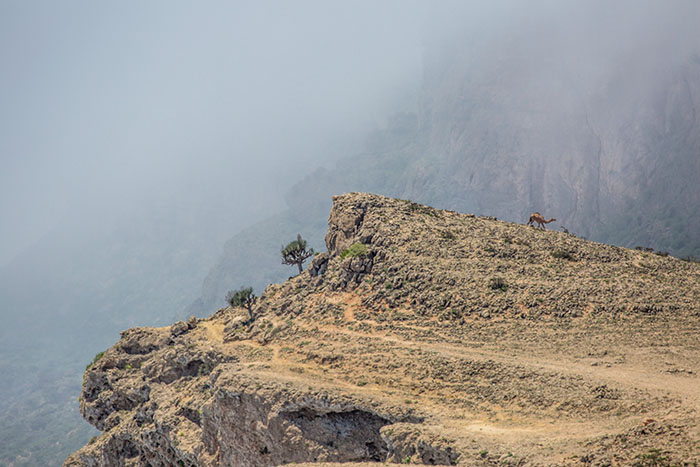
Samhan Mountain is one of the most important mountain ranges in the Governorate of Dhofar, with a maximum height of 2,100 metres. Samhan Mountain includes many plateaus punctuated by narrow and deep gorges, some of which are about 1,000 metres deep. At this elevation, only plants native to semi-arid climates can be found.
“Dhofar’s highest mountain is also home to Oman’s leopard sanctuary, for which special permission to visit is required,” says the Ministry of Tourism. “However, visitors can explore a host of attractions ranging from the Tawi Ateer sinkhole to the round houses of the indigenous Jebbali tribe, before setting up camp on the peak’s plateau – just before the sanctuary’s entrance.
“Jabal Samhan is one of the major mountain ranges of Dhofar, whose highest peak reaches 2,100 metres,” the ministry went on to say. “Jabal Samhan has many levels that are traversed by deep and narrow mountain passes, some of which are up to a thousand feet deep. On the plain of Jabal Samhan different plant species such as acacia and frankincense trees grow.
“The narrow mountain passes are poor in water, but there are numerous streams that serve as an important source of water for most of the animals living here,” said the ministry. “In addition to the Arabian leopards are many other mammals native to these mountains, including the Arabian gazelle, the fox and the Nubian goat.”
Various plants grow in the plain of Jabal Samhan, such as acacia and gum trees. The narrow mountain passes have little water but there are a number of streams, which are an important source of water for most animals found in the region. Besides the Arabian leopard (considered a rare animal), these mountains are home to a number of other mammals such as the Arabian gazelle, foxes and the Nubian ibex.
Leopards are the animals that best adapt to the surrounding environment, and are often smaller and lighter in colour than their African counterparts. Arabian leopards have survived for a long time in the northern mountain range of the Arabian Peninsula.